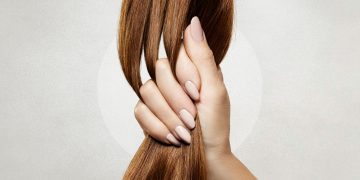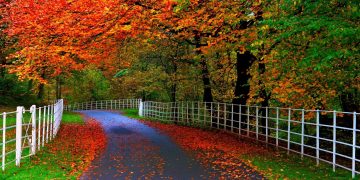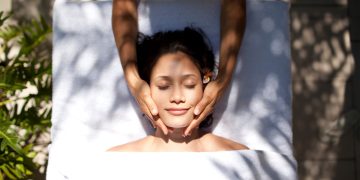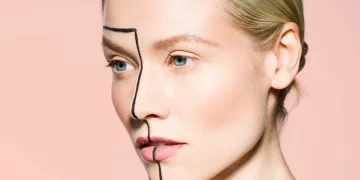In the relentless pursuit of flawless skin, we invest in potent serums, high-tech devices, and rigorous dietary plans. Yet, we consistently overlook the most fundamental, accessible, and powerful beauty tool we possess: our breath. This involuntary act of life, happening over 20,000 times a day, is far more than just a metabolic function. It is a direct dial to our nervous system, a master regulator of circulation, and a potent detoxifier. The way we breathe—shallowly and rapidly versus deeply and slowly—can either perpetuate a state of stress and cellular stagnation or become a cornerstone of a radiant, healthy complexion. So, can the simple, conscious act of breathing truly be a transformative force for skin health?
The answer is a resounding yes. This article will explore the profound physiological connections between our respiratory patterns and the vitality of our skin. We will dissect the critical roles of oxygenation and blood circulation, and provide practical, evidence-based breathwork techniques that can be seamlessly integrated into any skincare routine, offering a truly holistic path to beauty from the inside out.
The Vital Current: Oxygenation as the Foundation of Cellular Energy
Every cell in our body requires a constant supply of oxygen to produce energy in the form of adenosine triphosphate (ATP). Skin cells are no exception; they are highly metabolically active, constantly engaged in the demanding processes of proliferation, differentiation, and repair. The outermost layer of the skin, the epidermis, is avascular—meaning it has no direct blood supply. Instead, it relies entirely on the diffusion of oxygen from the capillary-rich dermis below. This makes efficient oxygen delivery not just important, but absolutely critical for skin health.
Chronic, shallow breathing—a hallmark of the modern, stress-filled lifestyle—creates a state of relative hypoxia, or insufficient oxygen, at the cellular level. The consequences for the skin are direct and detrimental:
- Slowed Cellular Regeneration: The process of skin cell turnover, which is essential for a bright, smooth complexion, is highly energy-dependent. Without adequate oxygen, this process slows down. Old, dull cells linger on the surface longer, leading to a lackluster, tired-looking appearance and a rough texture.
- Impaired Collagen Synthesis: Fibroblasts, the cells responsible for producing collagen, elastin, and hyaluronic acid, are voracious consumers of energy. Hypoxic conditions directly inhibit their activity. A study published in the Journal of Investigative Dermatology found that low oxygen tension can suppress the expression of genes involved in collagen production. Over time, this contributes to the formation of fine lines and a loss of skin firmness.
- Compromised Wound Healing and Repair: The skin’s ability to repair itself from daily micro-injuries, such as UV damage and inflammation, is heavily dependent on an abundant oxygen supply. Hypoxia disrupts the inflammatory and proliferative phases of wound healing, leading to slower recovery and potentially more noticeable scarring.
Conscious, deep breathing acts as a direct countermeasure to this. By taking full, diaphragmatic breaths, we maximize the oxygen saturation in our blood. This oxygen-rich blood then perfuses the dermal capillaries, creating a steep concentration gradient that drives life-giving oxygen upward to the energy-starved epidermal cells. In this way, breath becomes the most direct delivery system for the fundamental fuel of cellular beauty.

The River of Life: Enhancing Blood Circulation for Nutrient Delivery and Detoxification
If oxygen is the fuel, then the circulatory system is the river that delivers it, along with all other essential nutrients, to the skin. It is also the primary waste-removal service, carrying away metabolic byproducts like carbon dioxide and lactic acid. The efficiency of this entire system is exquisitely sensitive to our breathing patterns and our nervous system state, which are intimately linked.
The autonomic nervous system has two main branches: the sympathetic (“fight-or-flight”) and the parasympathetic (“rest-and-digest”). Chronic stress keeps the sympathetic nervous system dominant, which constricts peripheral blood vessels—a phenomenon known as vasoconstriction. This is an evolutionary adaptation to shunt blood away from the skin and toward the major muscles in a perceived emergency. In our modern world, this “emergency” state becomes chronic, leading to reduced blood flow to the face. The result is a pale, sallow complexion and a buildup of cellular waste that can contribute to puffiness and a lack of radiance.
Conscious breathwork is the most rapid and effective way to switch the nervous system from a state of stress to a state of calm. Deep, slow breathing, particularly with an extended exhalation, stimulates the vagus nerve, the command center of the parasympathetic nervous system. This triggers vasodilation—the widening of blood vessels.
The benefits of this enhanced circulation for the skin are profound:
- Improved Nutrient Delivery: A robust blood flow ensures a steady supply of vitamins, minerals, amino acids, and fatty acids directly to the dermal fibroblasts and epidermal cells, supporting all their vital functions.
- Efficient Detoxification: Enhanced circulation speeds up the removal of inflammatory compounds and cellular debris from the skin tissue. This reduces underlying inflammation, which is a key driver of redness, acne, and rosacea, and helps to diminish the appearance of dark circles under the eyes by preventing blood from pooling and stagnating.
- The “Breathwork Glow”: The immediate vasodilation caused by a few minutes of deep breathing brings a rush of warm, oxygenated blood to the facial skin. This creates a natural, healthy flush—a literal “glow” that no highlighter can replicate. With consistent practice, this temporary effect contributes to a more permanent improvement in overall skin tone and vitality.
The Practice: Practical Breathwork Techniques for Radiant Skin
Knowing the theory is one thing; applying it is another. The following techniques are simple, require no equipment, and can be practiced anywhere to directly harness the beauty benefits of the breath.
1. Diaphragmatic Breathing (Belly Breathing)
This is the foundation of all functional breathing and should become your new normal.
- How to: Sit comfortably or lie on your back. Place one hand on your chest and the other on your belly. Inhale slowly and deeply through your nose, focusing on allowing your belly to rise and expand. The hand on your chest should remain relatively still. Exhale slowly through your nose or pursed lips, feeling your belly fall. Aim for a ratio where your exhalation is longer than your inhalation (e.g., inhale for 4 counts, exhale for 6 counts).
- Beauty Benefit: Ensures maximal oxygen exchange, stimulates the vagus nerve for better circulation, and reduces cortisol levels, mitigating stress-induced breakouts.
2. The 4-7-8 Breathing Technique (The Relaxing Breath)
Developed by Dr. Andrew Weil, this technique is a powerful tool for calming the nervous system, especially before sleep—a critical time for skin repair.
- How to: Place the tip of your tongue against the ridge of tissue behind your upper front teeth. Exhale completely through your mouth, making a whoosh sound. Close your mouth and inhale quietly through your nose for a count of 4. Hold your breath for a count of 7. Exhale completely through your mouth, making a whoosh sound, for a count of 8. This is one breath. Repeat the cycle three to four times.
- Beauty Benefit: Forces a deep state of relaxation, drastically reducing stress hormones. This improves overnight skin regeneration and reduces inflammation.
3. Bhramari Pranayama (Bee Breath)
This ancient yogic technique is renowned for its instant calming effect and its ability to relieve tension in the face and head.
- How to: Sit in a comfortable position with your eyes closed. Gently place your index fingers on the tragus cartilage of your ears. Inhale deeply through your nose. As you exhale, gently press the cartilage and make a low-pitched, humming sound, like a bee. Feel the vibration resonate throughout your skull and face.
- Beauty Benefit: The vibrations are believed to stimulate nitric oxide release, a potent vasodilator, thereby increasing circulation to the facial skin. It also releases tension in the jaw and temples, which can soften the appearance of stress lines.
Conclusion: Weaving Breath into the Fabric of Beauty
The quest for perfect skin has led us to look everywhere but within. We have overlooked the fact that the very essence of life—the breath—holds the key to unlocking our most radiant complexion. By moving from unconscious, shallow breathing to conscious, deep respiration, we directly influence the two most critical systems for skin health: oxygenation and circulation.
This is not to dismiss the value of topical skincare or a healthy diet, but to place them on a more solid foundation. A hundred-dollar serum cannot compensate for oxygen-starved, circulation-deprived skin cells. By integrating just five minutes of intentional breathwork into your morning and evening routine, you activate the body’s innate healing and rejuvenating capabilities. Breath is the forgotten tool of skin health, waiting to be rediscovered. It is free, always available, and possesses the transformative power to deliver a glow that truly comes from within.












































